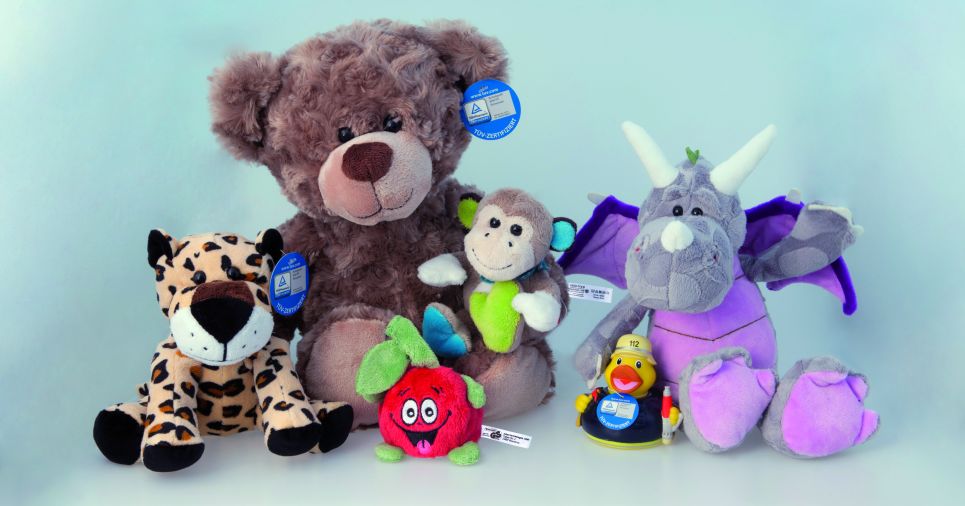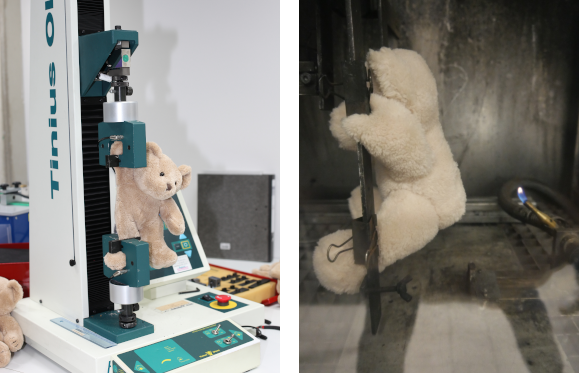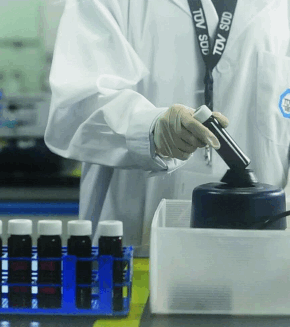It is bad enough when under the not so gentle children’s hands toys break faster than one can say “Jack Robinson”, but it is even worse if they contain harmless substances or even constitute a direct risk because small parts can break off and be swallowed. A visit to mbw explains what has to be heeded and which test seal stands for what.

Rubber ducks live dangerously: Rough seas in the bath may not affect them at all, but some little pirates or young steamer skippers might come up with the idea of taking a chunk out of them. The cuddly plush companions don’t have an easy life either: As true affairs of the heart, they get really close to their companions, are squeezed, plucked and dragged along everywhere: to the breakfast table, to the toilet, inside the football goal, on school trips, to the holiday camp… They have to withstand all of this. Not due to reasons of selfprotection or species survival, but out of concern for the child.
This is why parents take a close look at toys before entrusting a product to their offspring. Promotional products buyers should adopt the same critical view as the parents. Only the items that they would let their own children take in the bath or to bed with them are suitable as loveable brand ambassadors. Lutz Franke, TÜV-tested specialist for toy safety and Quality Manager at the promotional products specialist, mbw, knows what has to be taken into account when selecting products. In addition to rubber ducks, stress items, reflectors and microfiber items, the company from Wanderup also offers a wide range of high-quality cuddly toys. “The CE label is definitely essential, which the distributing company should attach to the product or the fastened tag clearly visibly, legibly, unmistakably and permanently,” stated Franke. “However, the mere label doesn’t mean that the actual product has been tested in any way.”
What testing institutes check
Here, the labels of independent testing institutes are much more significant. Three of the most important seals in the toy safety area can be found among mbw’s product range: For example, many of the ducks of the Schnabels® collection and several cuddly toys such as the bestseller Bear Bodo are TÜV-certified. The classic yellow ducks as well as the items from the Schmoozies series – small cuddly toys with a microfiber underside that can be used to clean displays – carry the GS-certificate “tested safety”. And according to own accounts for part of the Minifeet series the firm from Wanderup is the first company to introduce an Oeko-Tex Standard 100-certified series of cuddly toys for the promotional products market. Franke explained the substantial differences of the respective seals: “The TÜV-proof seal is awarded after a comprehensive check of both the physical/mechanical and chemical characteristics. The GS label is the only state quality seal. It is awarded for five years, however the tests involved are even more extensive and also include a type examination. The Oeko-Tex tests primarily check that no harmful substances or prohibited Azo pigments, carcinogenic dyes, heavy metals or plasticisers are contained, whereby the defined parameters are often much stricter than the legal provisions. It is important that all parts of an item, for example also the buttons and the seams comply with the criteria laid down.” Due to the large number of chemical tests that have to be carried out, the Oeko-Tex seal is extremely time-consuming, although the seal is only awarded for one year.
All articles tested have the corresponding labels attached to them. With the aid of the test number imprinted on the labels, the individual items and their test reports can be tracked in the Certipedia database. This ensures transparency. The tested products are put through their paces by the diverse test institutes. For example, tensile tests are obligatory, here the seams have to withstand a tensile force of 7 kg – much more than children can usually apply. The flammability of the fabrics is tested – the priority here is that no explosions occur if products are set fire to. The volume level of the rubber ducks is examined and all items are tested to make sure they are perspiration and saliva-proof, to name only the most common test procedures.

When cuddly toys are tested for their conformity according to EN 71, tensile and flammability tests are on the agenda
What can one test oneself?
With such well-checked products, the buyers and consumers are without doubt on the safe side, however even without the obligatory test seals, there are clear signs as to whether the cuddly heroes one brought home after visiting the latest trade show are safe playmates or not. “We check each batch again ourselves here in Wanderup,” explained Franke, “and test them according to the questions the parents ask themselves when they inspect a cuddly toy. Do the items have a product label? Are they clean? Does the dye come off? Can the small parts, particularly the eyes, fall off easily? Are any of the seams open? How firm are they? And last, but not least: What do they smell like?” If one receives positive replies to all of these questions, one can hand over the product to the customer or one’s own children reassured.
“For really safe products one requires a consistent quality philosophy that encompasses all areas of the company,” emphasised Breuer. “This begins with the procurement of the material and the use of dyes and continues with the production in the Far East, where we have been collaborating with companies, who know our safety requirements and implement these, for decades.” The workers in the cuddly toy factories carry out additional processes to make sure the cuddly toys are even safer: For example, the eyes are soldered to the back so that they can’t fall off, the plastic pearls that lend the toys improved stability are sewn into a small sack and each product is sent through a metal detector again to make sure it doesn’t contain a needle that may have broken off. Social compatibility is also a theme that shouldn’t be forgotten: After all, scandals regarding poor production conditions would not only cost the suppliers, but also the promoting company dearly. Via its membership with the BSCI (Business Social Compliance Initiative), mbw ensures that the social relationships with the supplier companies in the Far East are continually improved. With this alignment the company from Wanderup has been making a name for itself as a supplier of tested high-quality toys on the promotional products market for decades. And yet the theme product safety has by no means merely become part of the routine. Constant new cognitions and regulations force every toy manufacturer to continually rethink his processes and engage in an ongoing exchange with other quality managers, the testing institutes and the respective market supervision authorities. This is time-consuming, but ultimately the well-being of the child is the top priority.
// Mischa Delbrouck
DIN EN71
 Under the European norm EN 71, which is also called the toy guideline, safety regulations are laid down that are binding for all toys sold in the EU. The norm has 14 parts in total, for most of the products of the promotional products industry Part 1 (mechanical/physical characteristics), Part 2 (flammability), Part 3 (migration of certain elements) and Part 9 (organic/ chemical compounds) are of the greatest relevance. On attaching the statutory CE label, the distributing company assures that his products correspond with the EN 71. However this does not include a test certificate, hence it is not a quality criterion.
Under the European norm EN 71, which is also called the toy guideline, safety regulations are laid down that are binding for all toys sold in the EU. The norm has 14 parts in total, for most of the products of the promotional products industry Part 1 (mechanical/physical characteristics), Part 2 (flammability), Part 3 (migration of certain elements) and Part 9 (organic/ chemical compounds) are of the greatest relevance. On attaching the statutory CE label, the distributing company assures that his products correspond with the EN 71. However this does not include a test certificate, hence it is not a quality criterion.
photos: Sabine Klüser (1), © WA Media; mbw (3)





